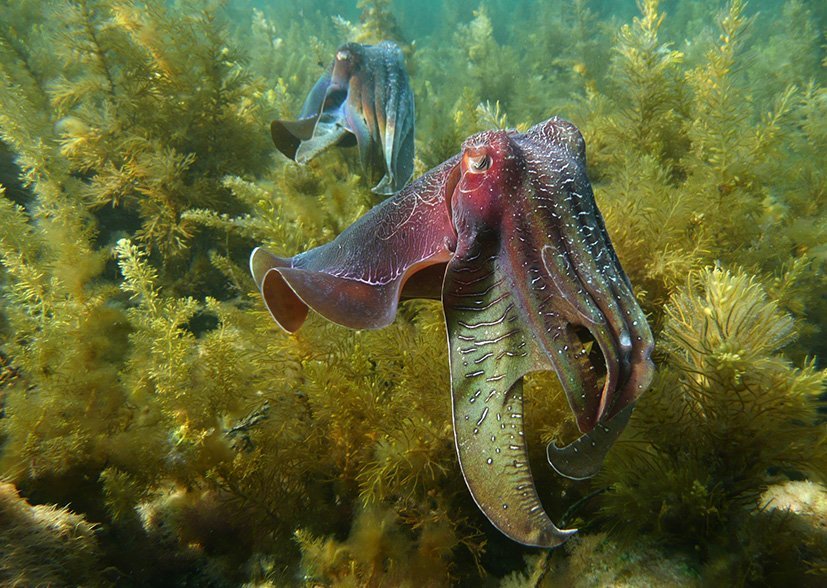Cuttlefish use polarising vision to communicate

Cuttlefish and other cephalopods use polarised light, which humans are unable to see, to communicate with each other and to distinguish objects under the water, according to a new Australian study.
Previous research has shown that fish and some reptiles can use wavelengths of the invisible UV spectrum to communicate with each other, but it was unknown how much other marine creatures used light outside the visible spectrum.
“The accuracy with which cuttlefish can see polarised light is much greater than we thought and that’s lending strong evidence that there’s this sort of language of polarisation out there that we previously didn’t appreciate,” says co-author Professor Justin Marshall from The University of Queensland in Brisbane.
Polarised light enhances vision
Unlike normal light, which travels in all directions, polarised light propagates only in one direction, which humans can only see with the aid of polarising lenses.
“We use polarisation when we put on polarising sunglasses, or in photography,” says Justin. “Fisherman will often wear polarising sunglasses because it removes the glare off the ocean.”
Animals with polarising vision are able to see a scene with heightened contrast, in much the same way as colour enhances human vision. Justin uses the example of how a red apple stands out in green tree.
“I can reach out and grab the apple because it contrasts with the tree, [but] for those people that are completely colour-blind, it means they can’t distinguish objects that somebody who does see colour can,” says Justin.
Secret language of light
In order to test the ability of cuttlefish – which are colour-blind – to distinguish polarised light, the researchers set up a test where they removed the outer polarised screen on an LCD monitor and showed it to cuttlefish.
If the cuttlefish had polarisation vision then it would react to the looming stimulus – in this case an increasingly bigger dot – on the screen by turning a different colour, its standard reaction mechanism to approaching objects.
Unlike desert ants and bees that use polarisation vision to navigate, cuttlefish have a “very highly tuned sense of polarisation,” says Justin. Cuttlefish “have specialised in polarising vision more so than other animals, [and] it’s safe to say they have done this because they live under water,” Justin says.
The researchers have concluded that this specialised polarising vision is used by cuttlefish to enhance their underwater view “more like colour vision, in that it enables these animals to see objects and make decisions about those objects,” Justin says.

Cuttlefish and other cephalopods such as squid use polarisation in their bodies to signal other animals, Justin suggests, “in just the same way as a bird might have a colourful tail feather that it waves to signal that it is ready to mate.”
Dr Mark Norman from the Victorian Museum agrees this kind of specialisation in cephalopods is a fascinating discovery.
“It shows how highly refined the visual systems are of these amazing creatures,” Mark says. “I always like to draw it back to how these relatives of garden snails are doing incredibly advanced and complicated behaviours and adaptations – and have been doing so in our seas for hundreds of millions of years – and we think we’re clever when we invent a night army scope!”
Mark thinks the research should change our perceptions of how these animals might be communicating with each other.
“They’re effectively wearing three-dimensional televisions on their bodies and the subtlety of their vision is just coming to light now,” says Mark. “If we could live in the shoes of those animals, it would be like putting on a jacket you could change the shape and colour of and send secret signals to the other secret agent animals that are out there in the same environment with their secret camouflage and sneaky ways to catch a feed.”
The research was published in the journal Current Biology.




